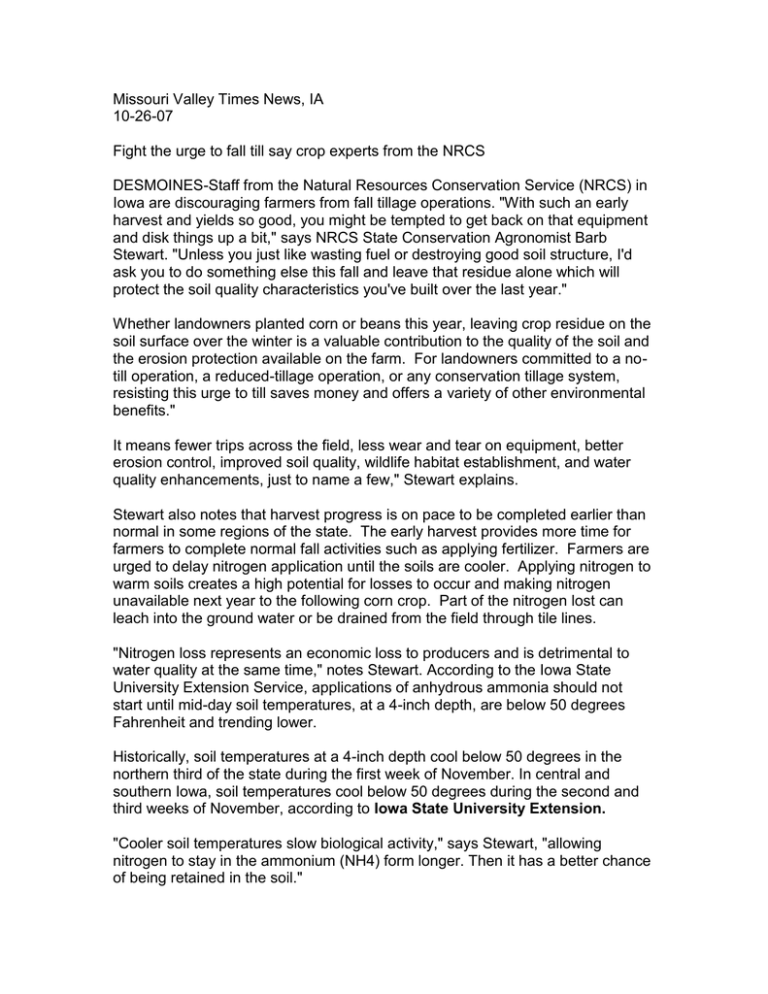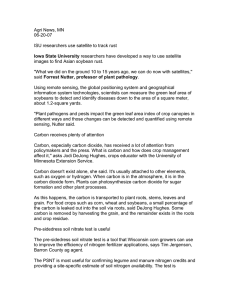Missouri Valley Times News, IA 10-26-07
advertisement

Missouri Valley Times News, IA 10-26-07 Fight the urge to fall till say crop experts from the NRCS DESMOINES-Staff from the Natural Resources Conservation Service (NRCS) in Iowa are discouraging farmers from fall tillage operations. "With such an early harvest and yields so good, you might be tempted to get back on that equipment and disk things up a bit," says NRCS State Conservation Agronomist Barb Stewart. "Unless you just like wasting fuel or destroying good soil structure, I'd ask you to do something else this fall and leave that residue alone which will protect the soil quality characteristics you've built over the last year." Whether landowners planted corn or beans this year, leaving crop residue on the soil surface over the winter is a valuable contribution to the quality of the soil and the erosion protection available on the farm. For landowners committed to a notill operation, a reduced-tillage operation, or any conservation tillage system, resisting this urge to till saves money and offers a variety of other environmental benefits." It means fewer trips across the field, less wear and tear on equipment, better erosion control, improved soil quality, wildlife habitat establishment, and water quality enhancements, just to name a few," Stewart explains. Stewart also notes that harvest progress is on pace to be completed earlier than normal in some regions of the state. The early harvest provides more time for farmers to complete normal fall activities such as applying fertilizer. Farmers are urged to delay nitrogen application until the soils are cooler. Applying nitrogen to warm soils creates a high potential for losses to occur and making nitrogen unavailable next year to the following corn crop. Part of the nitrogen lost can leach into the ground water or be drained from the field through tile lines. "Nitrogen loss represents an economic loss to producers and is detrimental to water quality at the same time," notes Stewart. According to the Iowa State University Extension Service, applications of anhydrous ammonia should not start until mid-day soil temperatures, at a 4-inch depth, are below 50 degrees Fahrenheit and trending lower. Historically, soil temperatures at a 4-inch depth cool below 50 degrees in the northern third of the state during the first week of November. In central and southern Iowa, soil temperatures cool below 50 degrees during the second and third weeks of November, according to Iowa State University Extension. "Cooler soil temperatures slow biological activity," says Stewart, "allowing nitrogen to stay in the ammonium (NH4) form longer. Then it has a better chance of being retained in the soil." "Take advantage of this early harvest and the extra time it gives you but don't let it tempt you to do things that make take their toll on the environment or your bottom line," adds Roberts.






